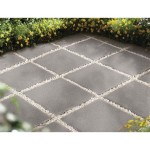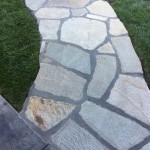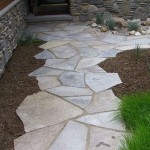How To Fix Uneven Patio Pavers
An uneven patio can detract from the aesthetic appeal of an outdoor space and, more importantly, pose a safety hazard. The tripping hazards and potential for water pooling make it imperative to address uneven pavers promptly. This article provides a detailed guide on how to identify the causes of uneven patio pavers and how to rectify the issue, ensuring a safe and visually appealing patio for years to come.
The process of fixing uneven patio pavers, while often perceived as daunting, is manageable with the right tools, a methodical approach, and an understanding of the underlying causes. This guide will cover the necessary preparation, the steps for removing and reinstalling pavers, and preventative measures to minimize future issues.
Identifying the Root Cause of Uneven Pavers
Before embarking on the process of lifting and leveling pavers, it is essential to understand the reason for the unevenness. Several factors can contribute to this issue, and identifying the root cause will help ensure a long-term solution.
One common cause is an unstable or poorly prepared base. The base layer, typically composed of compacted gravel and a leveling sand layer, provides a solid foundation for the pavers. If the base is not properly compacted or if the materials used are not suitable, it can shift and settle over time, leading to uneven pavers.
Erosion is another significant contributor. Water runoff, whether from rain or irrigation, can wash away the base material beneath the pavers, creating voids and causing them to sink. This is especially common in areas with poor drainage or sloping terrain.
Tree roots can also wreak havoc on patio pavers. As trees grow, their roots can expand beneath the patio, lifting and displacing pavers. This can be particularly problematic with fast-growing trees planted near the patio area.
Improper installation is another frequent culprit. If the pavers were not initially laid correctly, with proper spacing and leveling, they are more likely to become uneven over time. This can include using an inadequate amount of leveling sand or failing to properly compact the base layer.
Finally, heavy loads and excessive use can contribute to unevenness. Repeatedly placing heavy objects, such as furniture or vehicles, on the patio can compress the base material and cause pavers to sink. Similarly, high foot traffic in certain areas can accelerate the settling process.
Careful inspection of the patio area, noting any patterns in the unevenness and considering the surrounding environment, can help pinpoint the underlying cause and guide the repair process.
Tools and Materials Required for Paver Repair
Having the right tools and materials is crucial for a successful paver repair project. Gather these items before starting to ensure a smooth and efficient process.
Essential tools include a rubber mallet, a flathead screwdriver or paver removal tool, a level (both a standard level and a long level are recommended), a shovel, a wheelbarrow or large container, a tamper (hand tamper or plate compactor), a broom, and safety glasses and gloves.
The necessary materials will depend on the extent of the repair and the underlying cause of the unevenness. Generally, you will need replacement pavers (if any are cracked or damaged), leveling sand (specifically designed for paver installation), gravel base material (if the existing base needs to be supplemented), polymeric sand (for filling the joints between pavers), and landscape fabric (to prevent weed growth and separate the base layers).
The quantity of leveling sand and gravel base material needed will depend on the size of the area being repaired and the extent of the settling. It is always better to slightly overestimate the amount needed to avoid running out mid-project. Polymeric sand should be selected to match the existing sand color if only repairing a small area.
Consider renting a plate compactor if the area being repaired is large or if the existing base layer is significantly unstable. This will ensure proper compaction and a stable foundation for the pavers.
Ensure you have adequate safety gear, including safety glasses and gloves, to protect yourself from dust, debris, and potential injuries during the repair process.
Step-by-Step Guide to Lifting and Leveling Pavers
The process of lifting and leveling pavers involves a series of steps, each crucial for achieving a professional and long-lasting result. This section provides a detailed guide, breaking down the process into manageable steps.
Step 1: Preparation and Paver Removal: Begin by clearing the patio area of any furniture, plants, or other obstructions. Identify the uneven pavers that need to be addressed. Use a flathead screwdriver or a specialized paver removal tool to carefully pry up the pavers surrounding the uneven ones. Work slowly and gently to avoid damaging the pavers. Continue removing pavers until you have access to the affected area and a sufficient working space.
Step 2: Inspecting the Base: Once the pavers are removed, thoroughly inspect the base layer. Look for signs of erosion, instability, or root intrusion. Remove any loose material, weeds, or debris. If the base layer is significantly eroded or compacted, you may need to remove a portion of it and replace it with fresh gravel base material.
Step 3: Preparing the Base: If adding new gravel base material, spread it evenly over the area and compact it using a hand tamper or plate compactor. Ensure the base is level and properly compacted. Next, add a layer of leveling sand, spreading it evenly to a depth of about 1 inch. Use a screed board or a similar tool to create a smooth and level surface. The leveling sand is crucial for achieving a precisely level surface for the pavers.
Step 4: Reinstalling the Pavers: Carefully place the pavers back into position, ensuring they are level with the surrounding pavers. Use a rubber mallet to gently tap the pavers into place. Check the level of each paver using a level, and adjust the leveling sand as needed to achieve a perfectly level surface. Maintain proper spacing between the pavers, typically around 1/8 to 1/4 inch.
Step 5: Filling the Joints: Once all the pavers are reinstalled and leveled, sweep polymeric sand into the joints between the pavers. Use a broom to ensure the sand is evenly distributed and fills all the joints completely. Follow the manufacturer's instructions for activating the polymeric sand, typically by lightly misting the patio with water. The polymeric sand will harden over time, creating a stable and weed-resistant joint between the pavers.
Step 6: Compaction and Final Touches: After the polymeric sand has cured, use a plate compactor (if available and if the patio is large) to gently compact the pavers and ensure they are firmly seated in the base. Sweep away any excess polymeric sand and inspect the patio for any remaining unevenness. Make any necessary adjustments. Replace any furniture or plants that were removed during the process.
By following these steps carefully, you can effectively lift and level uneven patio pavers, restoring the beauty and safety of your outdoor space.
Preventative Measures for Maintaining a Level Patio
Preventing uneven pavers is often easier and less time-consuming than repairing them. Implementing preventative measures can significantly extend the lifespan of a patio and minimize the need for future repairs.
Proper drainage is crucial for preventing erosion and water damage beneath the pavers. Ensure that the patio is properly sloped to allow water to drain away from the house and other structures. Install drainage systems, such as French drains or surface drains, in areas prone to water accumulation.
Regular maintenance is essential for keeping the patio in good condition. Sweep the patio regularly to remove dirt, debris, and leaves. This prevents organic matter from accumulating in the joints between the pavers and promoting weed growth. Inspect the patio periodically for signs of unevenness, cracking, or erosion, and address any issues promptly.
Avoid placing heavy objects on the patio. Distribute weight evenly by using furniture pads or protective mats under heavy items. Avoid driving vehicles or parking heavy equipment on the patio, as this can compress the base material and cause pavers to sink.
Consider using a paver sealer to protect the pavers from staining, weathering, and erosion. Paver sealers can help to prevent water from penetrating the pavers and the base material, reducing the risk of unevenness and other damage. Choose a paver sealer that is specifically designed for the type of pavers used on your patio.
Regularly inspect and maintain the trees and shrubs surrounding the patio. Trim tree roots that are encroaching on the patio area to prevent them from lifting and displacing pavers. Keep shrubs and bushes trimmed to allow for proper air circulation and prevent excessive moisture accumulation.
By implementing these preventative measures, you can significantly reduce the risk of uneven pavers and maintain a beautiful and safe patio for years to come. These measures, when combined with proper installation and regular maintenance, will ensure the longevity and aesthetic appeal of your outdoor living space.

How To Fix Uneven Patio Pavers

How To Level Uneven Brick Pavers S

How To Fix Uneven And Sunken Pavers Step By Guide

How To Reset Pavers The Potato

How To Level Uneven Brick Pavers S

Fixing Sunken Or Crooked Bricks Pavers Yourself Diy

Raise Sunken Patio Pavers

Raising And Leveling Sunken Patio Pavers Toolbox Divas

Save Thousands And Fix Your Patio Pavers Yourself Frugal Thumb

How Do You Fix Uneven Pavers
Related Posts








